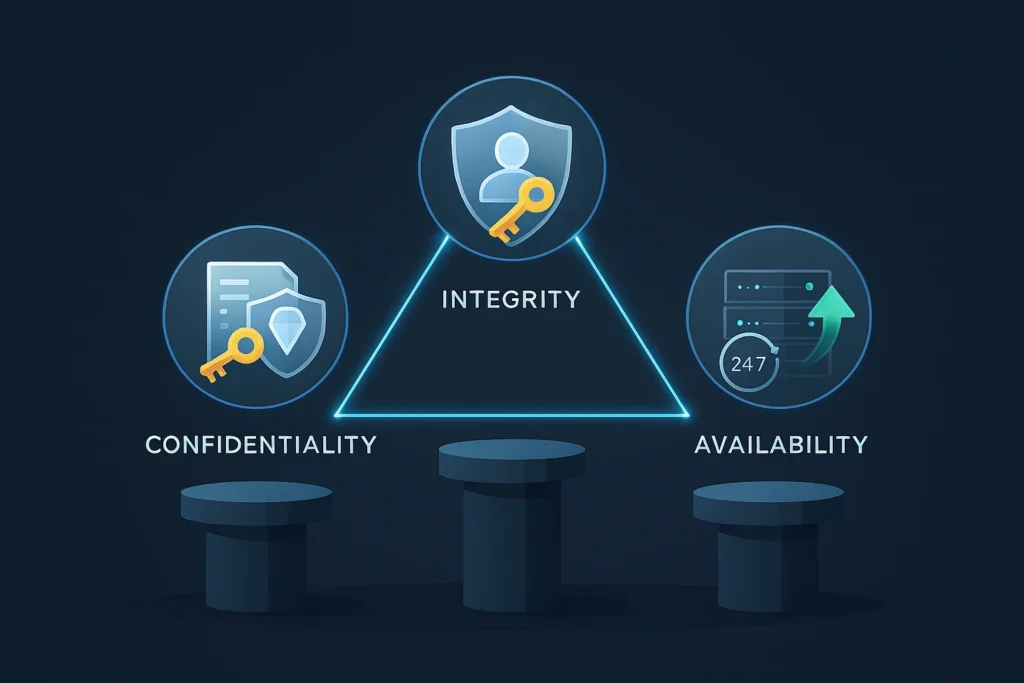Breaking: small and medium-sized businesses are now the primary target of cyberattacks. Over 40% of all attacks focus on SMBs, yet only 14% are prepared to defend themselves. In practice, limited budgets and expertise create critical security gaps. Therefore, adopting affordable, scalable security measures is no longer optional — it’s essential.
Why SMBs Are Prime Targets
Cybercriminals see SMBs as low-risk, high-reward opportunities. Many lack dedicated security teams or advanced tools. Verizon’s 2023 DBIR confirms that 61% of breaches involved credentials theft or phishing — techniques that prey on human error. Without basic protections, SMBs face operational disruption, financial loss, and reputational damage.
Key threats include:
- Ransomware
- Business email compromise (BEC)
- Supply chain attacks
- Unpatched software exploits
Essential Low-Cost Security Measures
1. Enforce Multi-Factor Authentication (MFA)
MFA blocks 99.9% of automated attacks. It is the single most effective control SMBs can implement — often at no cost. Use solutions like Microsoft Authenticator or Google Authenticator. Apply MFA to all email, cloud, and financial accounts.
2. Regular Patch Management
Unpatched software caused 35% of intrusions last year. Enable automatic updates wherever possible. Prioritize patches for operating systems, VPNs, and public-facing applications. Review CISA’s Known Exploited Vulnerabilities catalog weekly.
3. Employee Security Training
Human error remains the top attack vector. Conduct monthly 15-minute training sessions using free resources from CISA or FTC. Teach teams to recognize phishing, use strong passwords, and report suspicious activity. In practice, continuous awareness reduces click-through rates by up to 70%.
4. Secure Backup Strategy
Ransomware can paralyze operations. Follow the 3-2-1 rule: keep 3 backup copies, on 2 different media, with 1 stored offline. Test backups quarterly. Cloud services like Backblaze or AWS offer SMB-friendly pricing.
5. Endpoint Protection
Traditional antivirus is insufficient. Deploy endpoint detection and response (EDR) tools. Solutions like Sophos Intercept X or CrowdStrike Falcon offer scalable subscriptions. They provide real-time threat hunting and behavioral analysis.
Leverage Free and Open-Source Tools
SMBs don’t need enterprise budgets to build strong defenses.
- Network Monitoring: Use Wazuh or Security Onion for intrusion detection.
- Email Security: Configure DMARC, DKIM, and SPF to prevent spoofing.
- Password Management: Implement Bitwarden or KeePass for secure credential storage.
- Vulnerability Scanning: Run OpenVAS or Trivy to find misconfigurations.
Develop an Incident Response Plan
Every SMB needs a clear response plan. Outline roles, communication channels, and recovery steps. Practice tabletop exercises annually. Templates from NIST or SANS provide excellent starting points. Quick response limits damage and recovery costs.
Monitor Advisories and Threat Intelligence
Subscribe to free alerts from CISA, US-CERT, and industry vendors. Join sector-specific Information Sharing and Analysis Centers (ISACs). Early warning of new exploits allows proactive mitigation. For example, CVE-2025-1234 required immediate patching — organizations that delayed suffered breaches.
Conclusion
SMBs can achieve robust security without large investments. Focus on foundational controls: MFA, patching, training, backups, and endpoint protection. Use open-source tools to extend capabilities. Stay informed through threat intelligence. Review your exposure today and apply these strategies now.
FAQ – Cybersecurity for SMBs
What is the most cost-effective security control for SMBs?
Multi-factor authentication (MFA). It is highly effective and often free. MFA prevents unauthorized access even if passwords are compromised.
How often should SMBs train employees on cybersecurity?
Monthly short sessions work best. Regular training keeps security top-of-mind and reduces phishing susceptibility. Use free resources from CISA or NICCS.
Are open-source security tools reliable for SMBs?
Yes, when properly configured. Tools like Wazuh for monitoring and Bitwarden for passwords offer enterprise-grade features at no cost. Support communities provide guidance.
What should an SMB do immediately after a ransomware attack?
Isolate affected systems. Notify law enforcement and insurers. Restore operations from clean backups. Avoid paying ransoms — there is no guarantee of data return.
How can SMBs protect against supply chain attacks?
Vet third-party vendors for security practices. Limit access privileges. Monitor for unusual network activity. Apply software updates promptly to avoid dependency chain exploits.
Do SMBs need cyber insurance?
Yes. Cyber insurance covers recovery costs, legal fees, and regulatory fines. It complements technical controls but should not replace them.
No post found!


